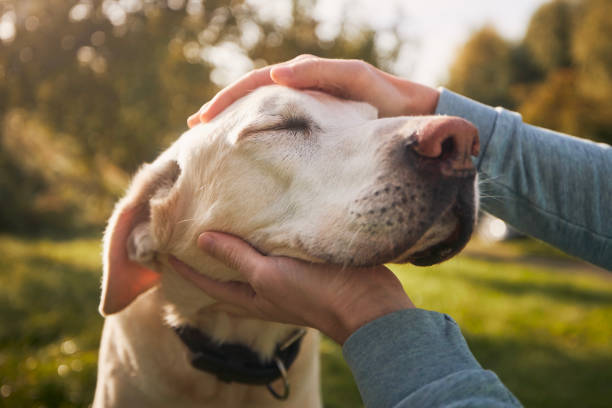
Co-Regulation and the Power of Pets: How Our Furry Friends Enhance Emotional Well-Being
In an ever-busy and often overwhelming world, our ability to navigate emotions, maintain balance, and foster resilience can sometimes feel like a monumental challenge. Enter the phenomenon of co-regulation, a term used to describe the mutual regulation of emotions and physiological states between individuals. While typically discussed in the context of human relationships, this concept extends beautifully to our relationships with pets.
What Is Co-Regulation?
Co-regulation refers to the process through which individuals influence each other’s emotional and physiological states in a reciprocal way. For humans, this can happen in interactions like a caregiver soothing a distressed child or a friend offering a calming presence during a tough time.
But it’s not just humans who engage in this. Pets—be it dogs, cats, rabbits, or even birds—offer powerful forms of co-regulation, impacting our moods, stress levels, and overall emotional health.
The Science Behind Pets and Emotional Regulation
The bond between humans and pets is supported by a wealth of scientific research. Here’s how pets contribute to co-regulation:
- Lowering Stress Hormones: Studies show that interacting with pets can reduce cortisol (the stress hormone) levels. Petting a dog or cat for just a few minutes can induce a calming effect, lowering heart rate and blood pressure.
- Releasing Oxytocin: Known as the “love hormone,” oxytocin is released during bonding moments. Gazing into your dog’s eyes or hearing your cat purr can trigger oxytocin release, creating feelings of trust and connection.
- Promoting Routine and Stability: Pets thrive on routine, which often encourages their humans to maintain healthier habits. This structure can help regulate emotions and create a sense of normalcy, particularly during times of uncertainty.
- Active Companionship: Dogs, for instance, can encourage physical activity, whether it’s a walk in the park or a playful game of fetch. This movement is not only good for physical health but also improves mood and reduces symptoms of anxiety and depression.
How Pets Help Humans Regulate
- Providing a Safe Space Pets are nonjudgmental companions, offering unconditional love and acceptance. They create a safe emotional environment, allowing people to process feelings without fear of criticism.
- Mirroring Calm Energy When you’re feeling anxious or upset, your pet’s calm demeanour—or even their ability to nudge you toward playfulness—can gently guide you back to a more regulated and present state.
- Acting as Emotional Anchors Pets are attuned to subtle changes in their owners’ moods. A dog might rest its head on your lap during a tough moment, or a cat might curl up beside you after a long day. These gestures help ground you and remind you that you’re not alone.
- Teaching Emotional Awareness Through their own cues and behaviours, pets can help us become more attuned to our need for emotional regulation. For example, a dog might retreat when you’re upset, signalling that your energy is affecting them. This feedback loop can encourage mindfulness and emotional control.
Real-Life Stories of Pet-Driven Healing
Many people have shared how pets have helped them through difficult periods. A widower finds solace in his golden retriever’s companionship after losing his spouse. A teenager battling anxiety finds that caring for a guinea pig creates a calming routine. A veteran with PTSD experiences relief through the steady presence of a therapy dog.
These stories aren’t just anecdotes—they’re living proof of the transformative power pets hold in helping us regulate and heal. We are interconnected beings that function at our best when we are connected to others, including our pets.
How to Deepen the Co-Regulation Bond with Your Pet
- Spend Quality Time: Engage in activities your pet loves, whether it’s playing fetch, brushing their fur, or simply sitting together.
- Practice Mindful Interactions: Use petting or grooming sessions as a moment of mindfulness, paying attention to their reactions and your own feelings.
- Observe Their Needs: Just as pets help regulate us, we can do the same for them. Watch for signs of stress or discomfort in your pet and respond with care.
- Create Shared Routines: A consistent schedule for meals, walks, and playtime strengthens your bond and mutual sense of stability.
A Relationship Beyond Words
The co-regulation between humans and pets transcends language and is built on mutual trust and instinct. It’s a testament to the profound connection that can exist between species. Whether you’re cuddling your cat during a rainy afternoon or taking your dog for a sunrise walk, these small moments weave together a relationship that supports emotional health for both parties.
So, the next time your furry (or feathered) friend curls up beside you or nudges you for attention, take a moment to appreciate the silent, soothing exchange happening between you. In those quiet moments, co-regulation becomes a powerful reminder of the healing connection we share with our pets—and the world around us.
Have a story about how your pet has helped you? Share it below! Let’s celebrate the incredible bond we share with our animal companions.
If you need support with this or any other challenge you are going through, please contact us at https://diversepathswellness.com/
Because somethings should not be carried alone.
